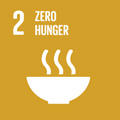- Docente: Giorgio Aicardi
- Credits: 6
- SSD: BIO/09
- Language: Italian
- Teaching Mode: Traditional lectures
- Campus: Rimini
- Corso: First cycle degree programme (L) in Exercise and Sport Sciences (cod. 8766)
-
from Mar 03, 2025 to Jun 05, 2025
Learning outcomes
At the end of the course the student: - knows the basic functional mechanisms of homeostasis of the internal medium, from the cellular level to the integrated level of organs, systems and apparatuses; - will be able to describe the basic functions of the circulatory, respiratory, renal, gastrontestinal and reproductive systems and the dynamic integration of their functions for the maintenance of the normal conditions of survival and health of the human organism; - will be able to detect and evaluate the main cardio-circulatory and respiratory functional parameters of subjects in normal and resting conditions.
Course contents
Endocrine system
General principles of endocrine physiology. Mechanisms of hormonal action. Mechanisms of control of hormonal secretion. Neuroendocrine integrated functions. Role of hypothalamus and pituitary gland on the control of hormonal secretion. Physiological functions of pituitary, pancreatic, adrenal, thyroid and parathyroid hormones. Mechanisms of regulation of calcium and glucose blood levels.
Reproductive system
Female reproductive system
Functional anatomy of the female reproductive system. Ovarian cycle. Estrogen and progesterone functions. Endometrial cycle. Hypothalamic control of ovarian function. Fertilization. Hormonal factors during pregnancy, delivery and lactation.
Male reproductive system
Functional anatomy of the male reproductive system. Spermatogenesis. Seminal fluid. Testosterone functions. Hypothalamic control of testicular function.
Cardiovascular system
Functional organization of the cardiovascular system
Scheme of the cardiovascular system. Functional characteristics of the systemic and pulmonary circulation. Blood composition, volume and functions. Hematic cells. Hemostasis.
Electrical activity of the heart
Electrical characteristics of cardiac cells. Origin and spread of cardiac excitation. Refractory period of the heart. Control of excitation and conduction in the heart. Electrocardiography.
Mechanical activity of the heart
Functional anatomy of the heart. Mechanical events of the cardiac cycle. Blood pressure and blood volume in atria and ventricles.
Control of cardiac output
Cardiac output: normal values and range of variation. Mechanisms of regulation of cardiac output: control of heart rate and stroke volume.
Vascular system
Characteristics and functions of the vascular system: arteries, arterioles, capillaries, venules, veins and lymphatic vessels. Hemodynamics: relation between flow, pressure and resistance. Pressure profile in the systemic circulation. Return of venous blood to the heart. Diffusion across the capillary wall. Regulation of local blood flow.
Regulation of blood arterial pressure
Normal values and range of variation of the blood arterial pressure. Mechanisms of regulation of arterial pressure.
Cardiovascular functions during physical exercise
Changes in cardiac output, arterial pressure and venous return during physical exercise. Redistribution of blood flow and integration of cardio-vascular responses during physical exercise.
Respiratory system
Pulmonary ventilation
Functional anatomy of the respiratory system. Characteristics and functions of the conducting zone and alveolar walls. Mechanics of pulmonary ventilation. Changes of alveolar and intrapleural pressure during respiratory cycle. Ventilation and alveolar perfusion. Lung volumes and capacities.
Exchanges of gases in lungs and tissues
Composition of atmospheric and alveolar air. Ultrastructure of the air-blood barrier. Physical and biological factors involved in oxygen and carbon dioxide exchange in lungs and tissues.
Blood transport of oxygen and carbon dioxide
Transport of oxygen in the blood. Oxygen-hemoglobin dissociation curve, functional implications and regulatory factors. Transport of carbon dioxide in the blood and regulatory factors.
Control mechanisms of respiratory activity
Neurogenesis of the respiratory rhythm. Brain structures involved in breathing control. Central and peripheral chemoreceptors, breathing control by carbon dioxide, pH and oxygen.
Urinary system
Basic renal processes
Functional anatomy of the kidney. Processes involved in urine production. Glomerular filtration: glomerular filtration barrier, velocity of filtration, physiological control of glomerular filtration. Tubular reabsorption and secretion.
Diuresis regulation
Mechanisms of urine concentration. The loop of Henle and the countercurrent multiplier system. Regulation of renal water and sodium reabsorption: role of antidiuretic hormone and aldosterone. Urination.
Regulation of acid-base balance
Biological buffer systems. Respiratory and renal homeostatic response to variations of the acid-base equilibrium.
Thermoregulation
Physiological mechanisms of heat production and loss. The normal body temperature. Factors affecting body temperature. Body temperature regulation. Fever.
Gastrointestinal system
Motor and secretory functions of the gastrointestinal system
Nervous and hormonal control of the functions of the digestive system. Chewing. Salivary secretion. Swallowing. Gastric motility and secretion. Vomit. Pancreatic and biliary secretion. Emptying of the gallbladder. Motility and secretions of the small and large intestine. Defecation.
Digestion and absorption
Digestion and absorption of carbohydrates, proteins and lipids. Functions of the intestinal microbiota.
Readings/Bibliography
E. Carbone, G. Aicardi, R. Maggi Fisiologia: dalle molecole ai sistemi integrati, (seconda edizione) EdiSES, 2018.
Teaching methods
Lectures using Power Point presentations.
Exercises showing how to perform the following functional tests in humans: electrocardiography, blood pressure measurement and spirometry.
Assessment methods
The learning assessment consists of two tests, each one divided into a written and an oral part; the two tests must be taken sequentially (the first one is preparatory to the second one).
1) The first test deals with the didactic module "Neurophysiology and muscle physiology"; the outcome is evaluated in thirtieths.
2) The second test (which can be taken the same day or later, within 24 months) mainly concerns the didactic module "Physiology of organs and systems; the outcome is evaluated in thirtieths.
The final grade is the arithmetic average of the grades reported in the two tests.
Teaching tools
Power Point presentations; dedicated equipment and sofware for exercises.
Office hours
See the website of Giorgio Aicardi
SDGs



This teaching activity contributes to the achievement of the Sustainable Development Goals of the UN 2030 Agenda.
